(Fifth of ten articles about the Kent Heitholt murder in 2001 with a primary focus on interpreting the physical and other evidence at the crime scene that has been made available over the Internet.)
In any effort to reconstruct a crime scene, one needs to try and ascertain how the area likely was before anything happened as well as what events occurred and altered the site after the commission of the crime. In this case, we first assume that there were few, if any, human interaction pavement markings before the onset of the conflict or assault involving Kent Heitholt.
Post murder activities at the crime scene
Soon after the police began arriving, they sought to preserve the crime scene by cordoning off the employee parking lot and restricting access to the crime scene. Including the victim’s Nissan Maxima, a total of four vehicles were cordoned off inside the parking lot.
After the murder, several persons visited the immediate crime scene near and about the driver side of the Heitholt Nissan Maxima until the body was removed. These include the two unknown strangers, Janitor Jerry Trump, sportswriters Russ Baer and Robert Thompson, several police officers and detectives, four or so paramedics who attempted resuscitation, and two funeral home employees summoned to remove the body.
The two strangers were observed at the crime scene on the driver side of the Heitholt Maxima over a span of two plus minutes. When observed they were mostly bent over or squatted down and out of clear sight of the two janitors.
Janitor Jerry Trump came out to check out the situation after the two strangers left and indicated he only took a quick look at the body before leaving to assist in the 911 call.
Robert Thompson said he and Russ Baer first checked the victim’s pulse and then turned him onto his back to better check him out. Apparently Thompson and Baer did not attempt resuscitation before the paramedics arrived.
The paramedics performed CPR and cardiac defibrillation on Heitholt in an attempt to get his heart restarted. To perform defibrillation, they cut open the victim’s sweater and tee shirt. After all efforts failed, they contacted a medical doctor who advised them to declare the victim deceased.
A cover was then placed over the body, the paramedics left the scene, and the police began their documentation of the evidence. This documentation included photographs and video, placement of placards, and removal of loose items on the pavement.
At 5:18 AM, Detective Nichols secured paper bags over both of the victim’s hands. A chalk outline of the body was also made. The funeral home employees then apparently used a scoop stretcher to remove the body to the location where the autopsy was to be conducted.
Where loose items and pavement markings were found
From a review of photos, it was apparent that a considerable amount of the victim’s blood had been deposited on the pavement during the assault and strangulation.
Police photos and videos revealed two general locales of blood pools with one being near and about the left rear wheel and the other being where the victim’s head had been during attempts at resuscitation.
Several items were found under the vehicle. They included a cell phone, one eye glass lens, several sports magazines and bulletins and some sports related articles. A severed belt buckle was found about one foot north of the victim’s head where it had come to rest during the resuscitation events. Five bloody foot prints were found and located by numbered placards. The police also placed cones indicating the locations where blood spray or drops were found outside of the area nearest the vehicle.
Examining the post murder events
It is unknown what the two strangers did or how they altered the crime scene. One possibility is one or more stepped into the blood pooling and left bloody footprints at the scene.
Based on his description of a brief visual inspection only, Janitor Jerry Trump likely caused very little if any alteration of the crime scene.
The two sports writers first tried taking the victim’s pulse and then turned him onto his back. One testified at trial and said that they did not move the victim beyond turning him onto his back. One or both may have stepped into the pooled blood and left one or more of the bloody footprints.
One or more of the several police officers and detectives may have stepped into blood evidence and produced one or more of the tracks found.
Based on the blood trail corresponding to the victim’s head, the paramedic’s likely relocated the victim three or four feet away from the pool of blood in order to better work on him. This move also likely involved relocating his legs out from well under the end of the vehicle.
The paramedic’s performed CPR and defibrillation. The CPR efforts simulated the heart pumping function and likely induced more blood to flow out of the victims head wounds. The defibrillation likely induced the victim’s head to suddenly raise and fall leading to radial outward splashing of the victim’s blood. The paramedics may have stepped into the pooled blood and produced one of more of the bloody footprints found.
Blood markings infer that the two funeral home employees turned the victim’s body onto its right side with the victim’s head leaving a blood impression of the relocation. Then they slid a scoop stretcher alongside the body leaving blood smearing markings of its movement. The funeral home employees then rotated the body onto the stretcher and placed it into the hearse for transport. They too had an opportunity to have inadvertently stepped into pooled blood and left a bloody footprint.
Anyone of the above with perhaps the exception of the funeral home employees may have left the single hair strand that was found in the victim’s bagged hand during autopsy.
Analyzing Crime Scene Images of the Pavement Markings
Several types of blood markings on the pavement can be identified in the available photos and video stills. One is a pooling of blood. Another is a draining trail of pooled blood. Another is a smearing or wiping of blood by another object such as a part of a body.
Another is a vertical dropping of blood. Still another is a splashing spray of blood.
After accounting for the markings left during resuscitation and later removal of the body, the photos reveal one large area of pooled and wiped blood outside and around the left rear wheel following the strangulation of the victim.
Apparent pavement scuffling markings by shoes were found in two locations. One was just outside the driver door. These appeared consistent with being made by the shoes of someone struggling about while lying flat alongside the vehicle with his head near the left rear wheel. A second set of scuffle markings were found just over into the next parking lot slot around police marker 2 for footprints. These scuffle type markings appeared consistent with someone upright and undergoing a strong unbalancing twisting action while heavily engaged in a conflict with another person.
One can surmise that the killer placed the bloodied assault weapon on the pavement when he decided to remove the victim’s belt to strangle him with it. Two possible weapon lay-down locations were found. Both suggested a rectangular weapon profile. One was opposite the driver door. The other was to the forward side of the left rear wheel. Most of my interpretation of the pavement markings is described in the following photo captions along with some notations added to some photos to locate items of interest:
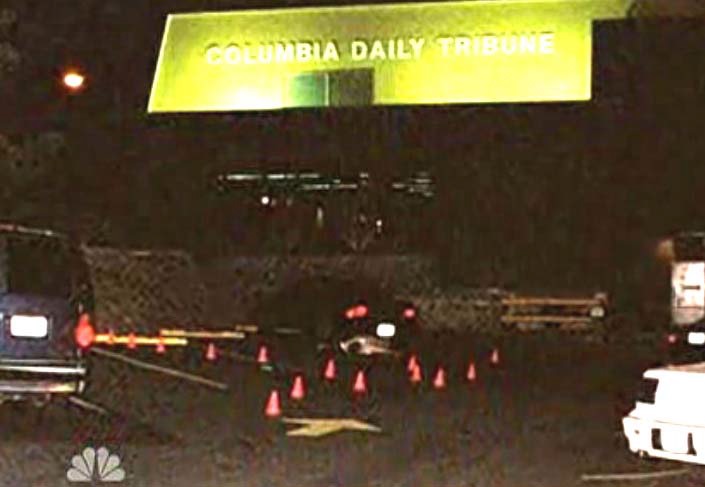
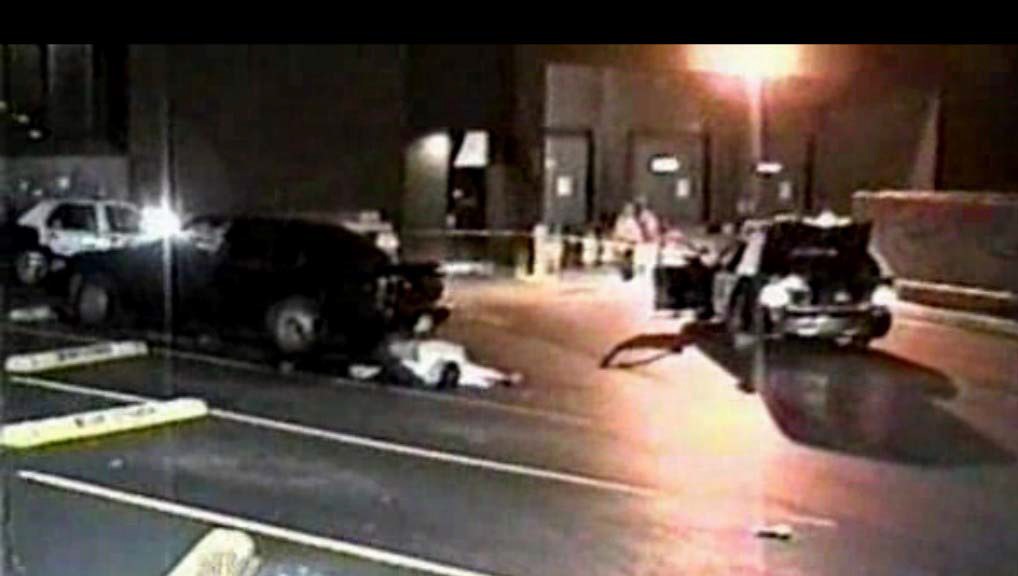
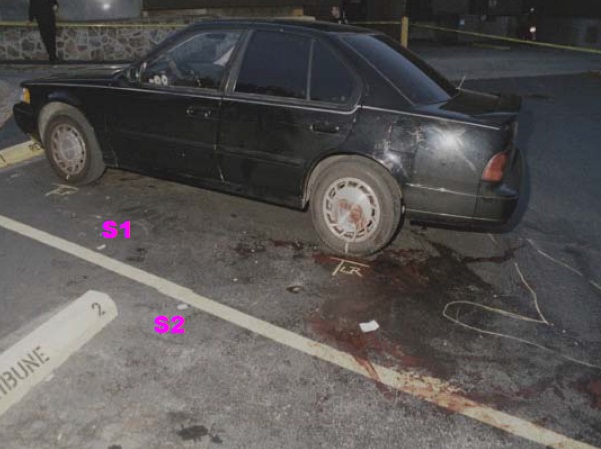
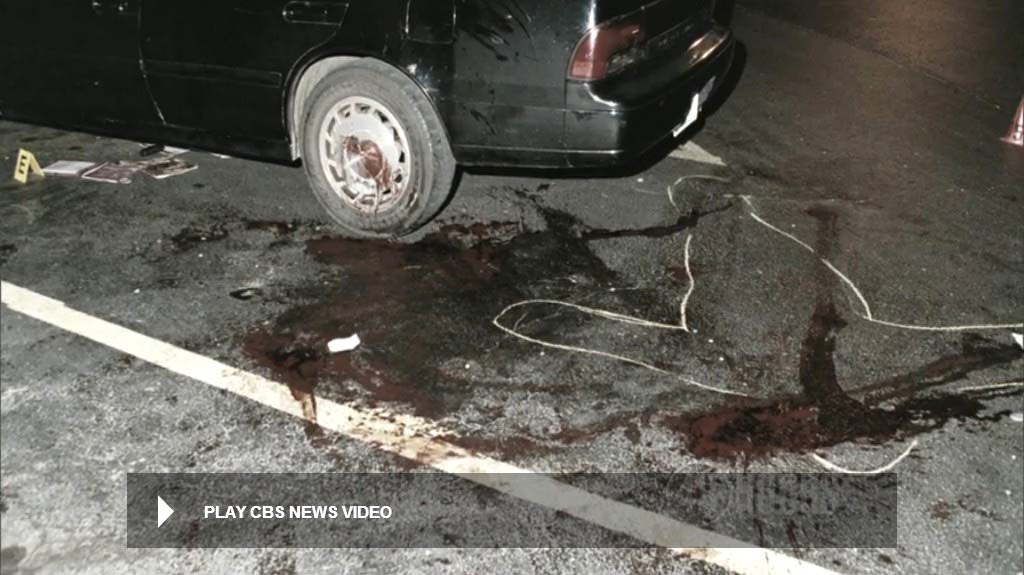
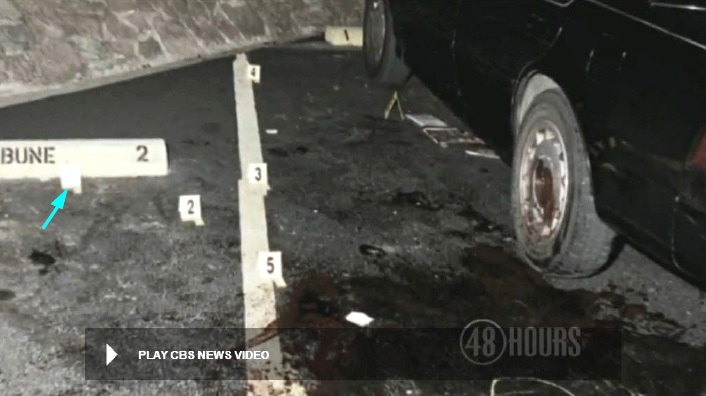
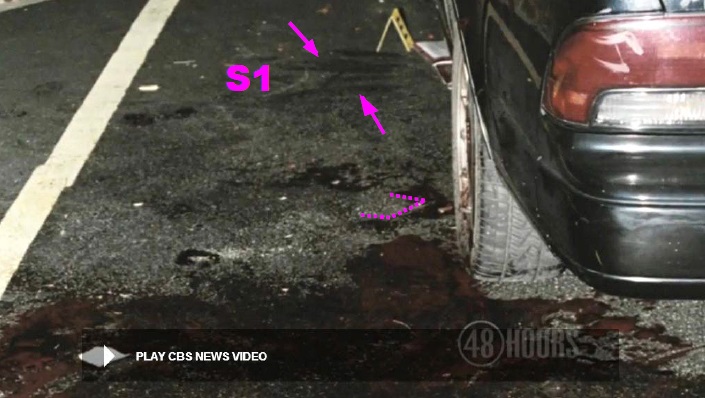
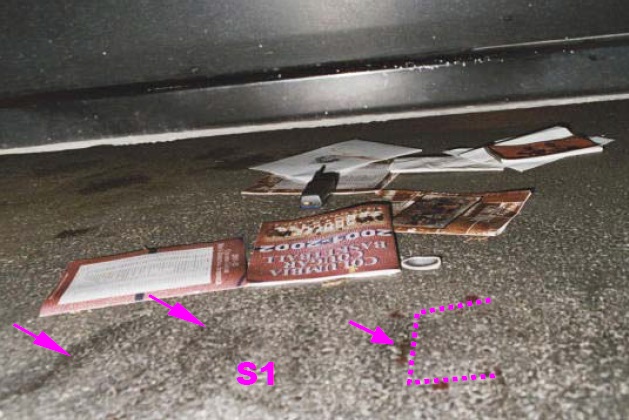
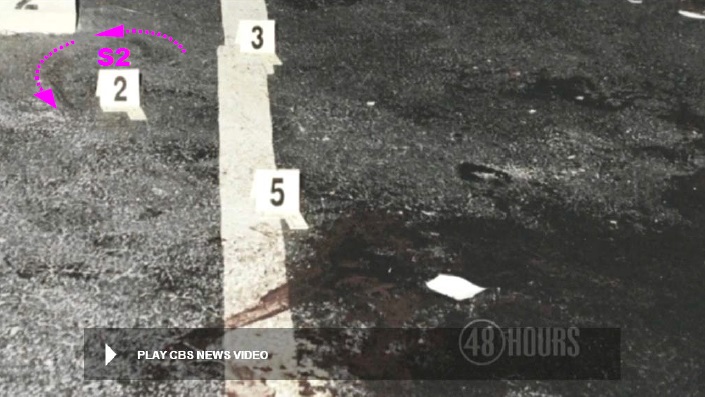
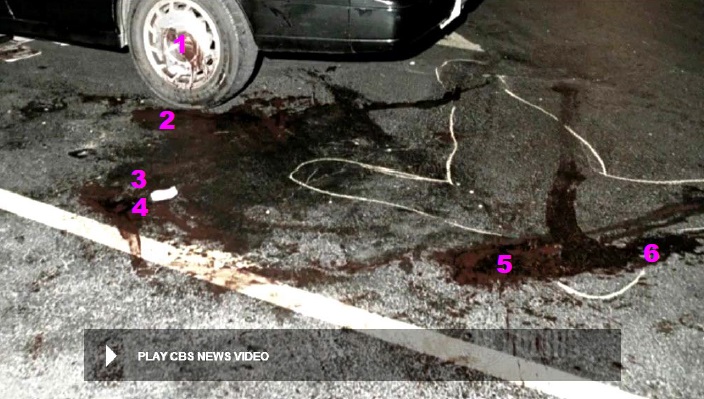
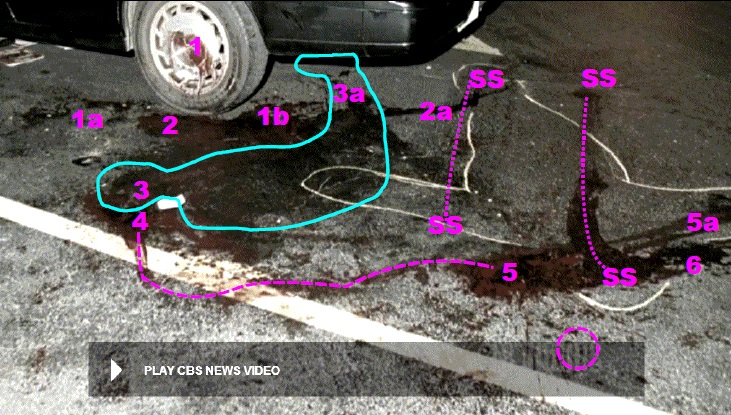
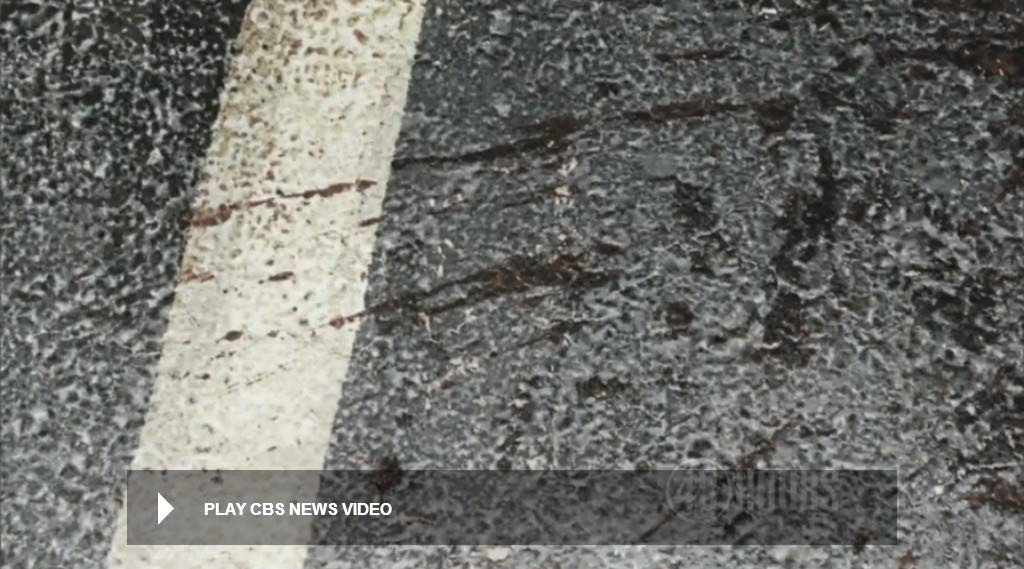
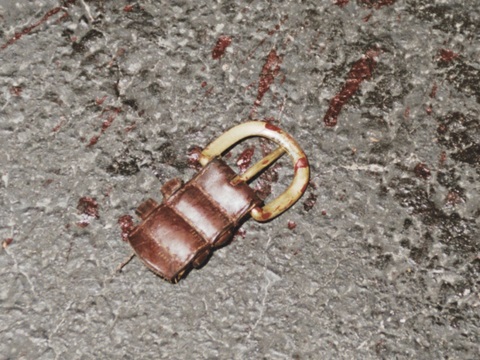
victim will be analyzed before putting together the likely sequence of these and other activities.
Part 6 of the series will be posted on Monday 2/24/14
You can view the series of articles here.
 Wrongful Conviction News an Injustice anywhere website
Wrongful Conviction News an Injustice anywhere website
